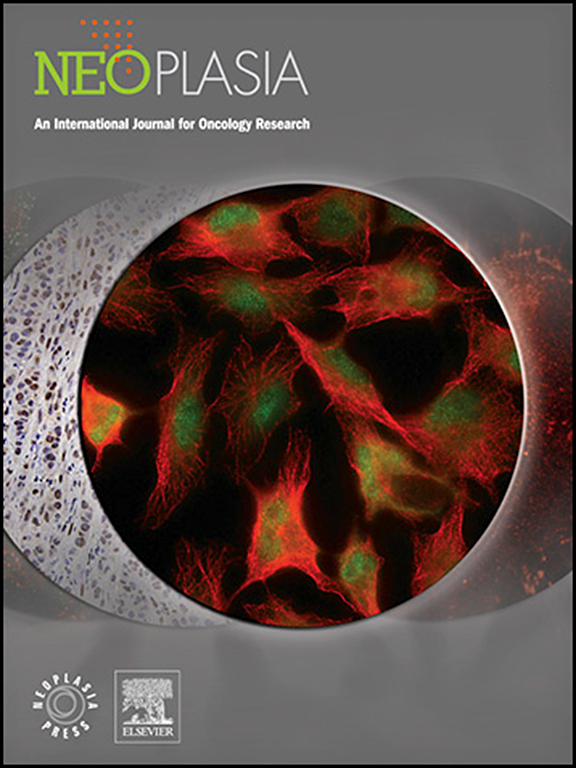Phase I clinical trial of a novel procaspase-3 activator SM-1 with temozolomide in recurrent high-grade gliomas
IF 4.8
2区 医学
Q1 Biochemistry, Genetics and Molecular Biology
引用次数: 0
Abstract
Objective
Despite a standard of care, the mortality of recurrent high-grade gliomas (HGGs) remains high. SM-1 is a novel molecular activator that has shown to target procaspase-3, which is overexpressed in HGGs. A phase I clinical trial was conducted to evaluate the safety, pharmacokinetics, and primary clinical efficacy of SM-1 plus TMZ. Participants received escalating doses of daily oral SM-1 (450, 600, and 800 mg) plus standard TMZ therapy.
Methods
In the preclinical study, the synergistic effects of SM-1 and temozolomide (TMZ) in rodent models were evaluated. In the clinical study, adult patients received SM-1 therapy in various doses in combination with a standard TMZ dosing. The tolerability and pharmacokinetics data of the combination therapy were tested. The primary efficacy was measured by tumor response in accordance with the RANO criteria.
Results
A total of 13 patients with recurrent HGG were enrolled, with 11 patients completed ≥ two cycles of therapy and received tumor assessment. Among them, one patient had complete response, whereas two patients had partial response for the best change from baseline. No dose-limited toxicities were observed, and no maximum tolerated dose was reached.
Conclusion
SM-1 has the potential to enhance antitumor activity while alleviating the side effects of TMZ. SM-1 exhibited mild toxicity in patients with recurrent HGG. The combination of SM-1 and TMZ warrants further investigation, with promising clinical outcomes. The monotherapy phase and expansion phase of SM-1 are still ongoing. (ClinicalTrials.gov number, CTR20221641).
新型procaspase-3激活剂SM-1联合替莫唑胺治疗复发性高级别胶质瘤的I期临床试验
尽管有标准的护理,复发的高级别胶质瘤(HGGs)的死亡率仍然很高。SM-1是一种新的分子激活剂,已被证明可以靶向在hgg中过表达的procaspase-3。进行了一项I期临床试验,以评估SM-1加TMZ的安全性、药代动力学和主要临床疗效。参与者接受每日递增剂量的口服SM-1(450、600和800毫克)加上标准TMZ治疗。方法在临床前研究中,评价SM-1与替莫唑胺(TMZ)在啮齿动物模型中的协同作用。在临床研究中,成年患者接受不同剂量的SM-1治疗,并结合标准TMZ剂量。对联合用药的耐受性和药代动力学数据进行了检测。根据RANO标准,通过肿瘤反应来衡量主要疗效。结果共纳入13例复发性HGG患者,其中11例患者完成≥2周期治疗并接受肿瘤评估。其中,1例患者完全缓解,2例患者部分缓解。没有观察到剂量限制毒性,也没有达到最大耐受剂量。结论sm -1具有增强TMZ抗肿瘤活性和减轻其副作用的作用。SM-1对复发性HGG患者表现出轻度毒性。SM-1和TMZ的结合值得进一步的研究,临床结果很有希望。SM-1的单药期和扩展期仍在进行中。(ClinicalTrials.gov编号:CTR20221641)。
本文章由计算机程序翻译,如有差异,请以英文原文为准。
求助全文
约1分钟内获得全文
求助全文
来源期刊

Neoplasia
医学-肿瘤学
CiteScore
9.20
自引率
2.10%
发文量
82
审稿时长
26 days
期刊介绍:
Neoplasia publishes the results of novel investigations in all areas of oncology research. The title Neoplasia was chosen to convey the journal’s breadth, which encompasses the traditional disciplines of cancer research as well as emerging fields and interdisciplinary investigations. Neoplasia is interested in studies describing new molecular and genetic findings relating to the neoplastic phenotype and in laboratory and clinical studies demonstrating creative applications of advances in the basic sciences to risk assessment, prognostic indications, detection, diagnosis, and treatment. In addition to regular Research Reports, Neoplasia also publishes Reviews and Meeting Reports. Neoplasia is committed to ensuring a thorough, fair, and rapid review and publication schedule to further its mission of serving both the scientific and clinical communities by disseminating important data and ideas in cancer research.
 求助内容:
求助内容: 应助结果提醒方式:
应助结果提醒方式:


